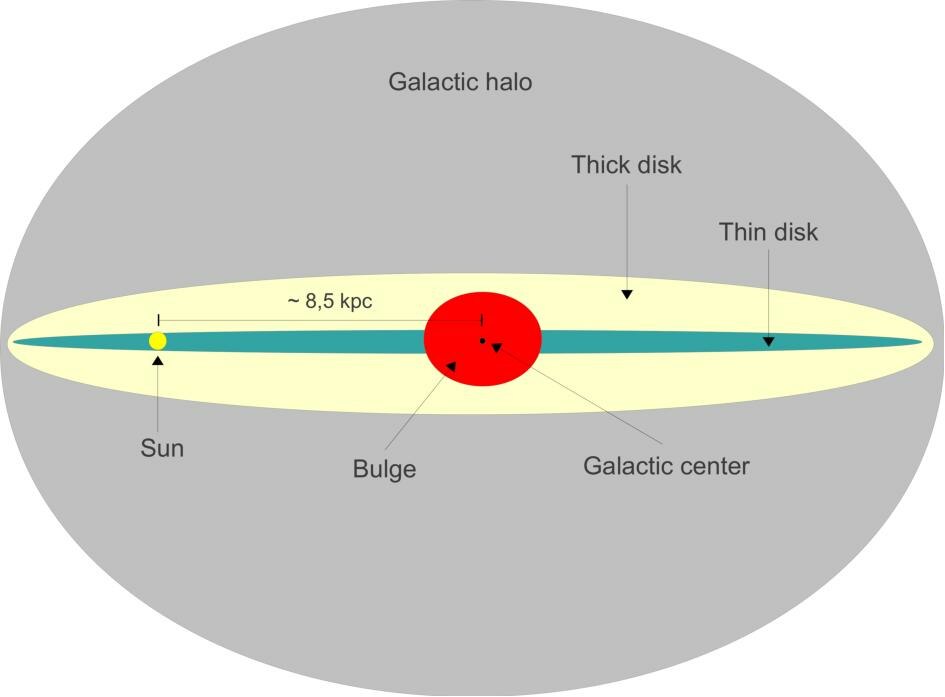Oh, that's a fascinating picture of a fascinating galaxy!

APOD Robot wrote:
Why is this galaxy so thin?
Components of the Milky Way. Wikimedia Commons/Gaba p.
Well, that depends on what you mean by a "thin" galaxy. Clearly NGC 5866 has a big fat halo. But all disk galaxies that contain a plane of dust, including the Milky Way, have a thin disk. Our own galaxy also has a thick disk, a bulge and a halo.
I have to admit that I can't readily discern a thick disk in NGC 5866, or even a bulge. There might not actually be a bulge in this galaxy, although there is a nucleus, which is hidden by dust.
It is fascinating, nevertheless, that the thin disk of NHC 5866 is
so thin. Obviously almost all star formation in this galaxy has come to an end. We can spot a very few bright spots, likely clusters, in the dust lane. My impression is that this galaxy is a lot less dusty than the Milky Way and contains far less star formation, and that its dust lane actually might be thinner.

The Milky Way. Photo: Ken Croswell.
Why is the dust lane two-colored? The orange part of it is clearly blocking and reddening light coming from behind it, like the dust lane of the Milky Way. But what about the long blue stretch of dust in NGC 5866? I guess this is either the thick disk of this galaxy, which would be blue for some reason. Or else this bluish color might be a sort of galaxy-sized reflection nebula. This could be dust with embedded stars, whose light might be reflected in our direction. That would explain the blue color too, because reflections nebulas are typically bluish.
But I'm doubtful that the bluish stretch of dust is as blue as it looks in today's APOD. I get the impression that the picture has been color-balanced so that the overall color of the galaxy is neutral. In my opinion, most of the light from this galaxy - and certainly from its halo - comes from old yellowish stars, particularly old red giants.
Note that the disk of NGC 5866 extends to the upper right and lower left, even when the dust disk has come to an end. Beyond the dust the disk is made of stars only. This could be the thick disk. Note its neutral color, which suggests that the stars it is made of are old or of intermediate age.
We can see two fantastic and incredibly large dust features rising above the disk. At left is a tremendous loop, and farther to the right is a humongous arc far above the disk. These features speak of past upheavals, possibly a series of supernovas.
All in all, a fascinating picture of a fascinating galaxy!
Ann
 Edge-On Galaxy NGC 5866
Edge-On Galaxy NGC 5866
